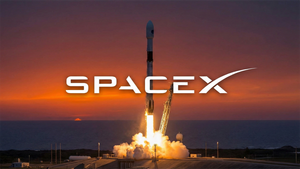
The Nasdaq Composite is enduring its most brutal week since the tumultuous "Liberation Day" in April, signaling a profound shift in market sentiment as the tech sector grapples with cooling enthusiasm and economic headwinds. This downturn is exacerbated by the specific drama unfolding at Tesla (NASDAQ: TSLA), where the electric vehicle giant's stock has tumbled despite shareholders overwhelmingly approving a controversial, multi-billion dollar pay package for CEO Elon Musk. As of November 7, 2025, a palpable "risk-off" mood pervades the market, prompting investors to re-evaluate high-growth tech valuations and brace for continued volatility.
The confluence of these factors paints a challenging picture for the broader market, with immediate implications pointing towards a period of heightened caution. The tech-heavy index's significant slide underscores a deeper concern about stretched valuations and the sustainability of recent gains, particularly in the artificial intelligence (AI) space. Meanwhile, the mixed reaction to Musk's pay deal at Tesla highlights a growing tension between incentivizing visionary leadership and concerns over corporate governance and potential shareholder dilution, adding another layer of complexity to an already fragile market.
Detailed Coverage: A Week of Reckoning for Tech Giants
The week ending November 7, 2025, has been a stark reminder of market fragility, with the Nasdaq Composite on track for its worst weekly performance since "Liberation Day" on April 2, 2025. The index plunged 1.9% on Friday, November 7, following a nearly 2% drop on Thursday, November 6, bringing its weekly losses to almost 3%. The "Liberation Day" event earlier this year saw then-President Donald Trump's announcement of sweeping reciprocal tariffs trigger widespread panic selling across global markets, leading to the largest global market decline since the 2020 crash and sending the S&P 500 plummeting 10.5% over two days. The current downturn, while different in catalyst, echoes that earlier period's intensity for tech stocks.
Pressure on the technology sector is multifaceted and intensifying. A cooling sentiment around artificial intelligence (AI) is a primary driver, with investors questioning the rapid pace of growth and the lofty valuations assigned to many AI-centric companies. Major tech players are feeling the squeeze, including (NASDAQ: NVDA) Nvidia, which saw its shares fall over 4% after reports of a new US ban on AI chip exports to China, and (NYSE: PLTR) Palantir Technologies, which extended steep losses. Other giants like (NASDAQ: GOOGL) Alphabet, (NASDAQ: META) Meta Platforms, (NASDAQ: AMZN) Amazon, (NASDAQ: MSFT) Microsoft, and (NASDAQ: AAPL) Apple have also experienced declines, fueling warnings from some Wall Street executives about an imminent market correction due to these elevated valuations.
Adding to the tech sector's woes are broader economic headwinds. Consumer sentiment has dipped to its lowest level since June 2022, reflecting growing pessimism among American consumers. Compounding this uncertainty is a prolonged government shutdown, which has not only created market jitters but also delayed the release of crucial economic data, making it harder for investors and the Federal Reserve to accurately assess the economic landscape. The labor market is also showing signs of weakening, with October 2025 marking the worst year for announced layoffs since 2009, largely due to restructuring within the technology sector as companies integrate AI and streamline operations.
Against this backdrop, Tesla's stock performance has drawn particular attention. At its annual meeting on Thursday, November 6, 2025, shareholders overwhelmingly approved a massive pay package for CEO Elon Musk, with over 75% in favor. The compensation plan, valued by the board at an astonishing $878 billion to $1 trillion if ambitious performance goals are met over the next decade, aims to incentivize Musk to remain at the helm and achieve targets related to market capitalization, vehicle deliveries, self-driving subscriptions, and humanoid robots. Despite the approval, which was initially seen by many as a positive for securing Musk's commitment, Tesla's (NASDAQ: TSLA) shares dropped 4.8% as US markets opened on Friday, November 7, and have lost 5.99% over the last five trading sessions. This decline is attributed to a complex interplay of the broader negative market sentiment, concerns among some investors about potential shareholder dilution from the massive stock grant, and the overarching economic pressures impacting the tech sector.
Winners and Losers in a Shifting Landscape
The current market environment, characterized by a tech-led sell-off and specific challenges for Tesla, is creating a clear divergence, penalizing overvalued tech and highly-dependent suppliers while creating opportunities for fundamental AI infrastructure providers, resilient EV competitors, and traditionally stable sectors.
Companies That Might Lose:
- Overvalued AI and Tech Companies: Firms with "sky-high valuations" and those heavily reliant on discretionary consumer spending are highly susceptible. (NASDAQ: GOOGL) Alphabet is grappling with valuation concerns. (NYSE: CRM) Salesforce Inc. experienced a 5.3% drop on November 7. (NASDAQ: AMZN) Amazon and (NASDAQ: MSFT) Microsoft, despite their dominance, saw declines of 2.9% and 2% respectively. (NYSE: PLTR) Palantir Technologies, despite strong earnings, saw its stock fall due to concerns over its "staggering 700x price-to-earnings (P/E) multiple." Hardware manufacturers and consumer electronics companies are also likely to suffer from reduced discretionary spending.
- Companies Undergoing Layoffs: A wide array of tech companies, including (NASDAQ: INTC) Intel, (NASDAQ: MSFT) Microsoft, (NASDAQ: AMZN) Amazon, (NASDAQ: META) Meta, (NASDAQ: RIVN) Rivian, and (NYSE: HPE) Hewlett Packard Enterprise, have been conducting significant layoffs throughout 2025, signaling internal challenges and a focus on cost-cutting.
- Tesla (NASDAQ: TSLA): Despite the pay package approval, Tesla faces "plunging sales, market share and profits" due to production bottlenecks, a slowdown in EV demand, and negative impacts from Elon Musk's controversial public statements.
- EV Charging Infrastructure Companies: A slowdown in overall EV sales growth, partly evidenced by Tesla's struggles, could negatively impact companies like (NASDAQ: BLNK) Blink Charging, which already laid off 20% of its workforce in May 2025.
Companies That Might Win or Be More Resilient:
- Foundational AI Infrastructure Providers: Companies providing core AI infrastructure are demonstrating strong performance. (NASDAQ: NVDA) Nvidia continues to defy the downturn with a record $30.0 billion in revenue for Q2 2025, driven by its Data Center segment, and its market capitalization has soared past $5 trillion. (NASDAQ: AMD) Advanced Micro Devices reported strong quarterly results due to booming demand for its data center chips. (NASDAQ: MU) Micron Technology is identified as a top-performing tech stock, indicating resilience within the semiconductor sector. Cybersecurity and Cloud Computing firms like (NASDAQ: MSFT) Microsoft Azure and (NASDAQ: AMZN) Amazon Web Services are considered essential for businesses.
- Tesla's EV Competitors: As Tesla faces challenges, other EV manufacturers are well-positioned to capture market share. (NYSE: GM) General Motors has emerged as the "undisputed #2 EV player in the U.S.," doubling its EV sales in the first half of 2025. (OTCPK: BYDDY) BYD (Build Your Dreams) is expected to overtake Tesla as the world's largest maker of battery electric vehicles in 2025. (NYSE: F) Ford is making significant inroads with models like the F-150 Lightning. Other Chinese EV manufacturers like (NYSE: NIO) NIO, (NASDAQ: XPEV) Xpeng, and (NASDAQ: LI) Li Auto, as well as traditional automakers like (OTCPK: HYMTF) Hyundai and (OTCPK: VWAGY) Volkswagen, are expanding their EV offerings.
- Energy Sector Companies: In times of market uncertainty, investors often rotate into more traditional and stable sectors. The Energy Select Sector SPDR (XLE) advanced on November 7, 2025, indicating a potential flight to safety.
Wider Significance: A Market in Recalibration
The current tech market turbulence, characterized by the Nasdaq slump, broad sector pressure, and Tesla's stock fall, signifies a market grappling with lofty AI valuations and broader economic uncertainties. It is a period of recalibration, reminiscent of past speculative bubbles, that is driving increased regulatory oversight and forcing a re-evaluation of business models and investment strategies across the interconnected tech ecosystem.
This market behavior fits into several overarching industry trends:
- AI Boom and Valuation Concerns: The fervent AI boom has been a primary driver of significant gains, but also the main source of current valuation anxieties. Analysts are increasingly warning of an "AI bubble," with some AI-related companies trading at valuations seemingly disconnected from their actual revenue generation. Nvidia's (NASDAQ: NVDA) $5 trillion valuation in November 2025, representing a substantial portion of the S&P 500, raises concerns about market concentration and systemic risk.
- Macroeconomic Headwinds: Persistent economic uncertainty, including a deteriorating labor market (over 153,000 U.S. job cuts in October, highest for that month in 22 years) and the ongoing U.S. government shutdown, are intensifying pressures. Higher interest rates, delayed by the Federal Reserve due to persistent inflation, generally negatively impact growth-focused tech companies.
- Continued Tech Innovation: Despite market pressures, underlying technological advancement continues. Top tech trends for 2025 include agentic AI (autonomous machine agents), advanced AI in cybersecurity, and the push for energy-efficient and hybrid computing solutions. Global IT spending is projected to grow by 9.3% in 2025, indicating continued investment in core tech infrastructure.
The ripple effects are felt across competitors and partners. In the broad tech sector, companies with high valuations based on future potential face increased scrutiny. In the Electric Vehicle (EV) market, Tesla's stock fall is partly attributed to intensifying competition from traditional automakers like (NYSE: GM) General Motors and (NYSE: F) Ford, and emerging startups, particularly Chinese manufacturers like (OTCPK: BYDDY) BYD. This heightened competition means thinner margins and a fight for market share across the entire EV industry. In the AI ecosystem, massive capital investments by hyperscalers like (NASDAQ: MSFT) Microsoft and (NASDAQ: GOOGL) Alphabet could eventually weigh on their share prices, impacting partners, though in the short term, demand flows to suppliers of essential components.
Regulatory scrutiny is also accelerating. Regulators are concerned about market concentration, systemic risk, and the ethical implications of AI. A market correction could accelerate government efforts to establish frameworks for AI ethics, governance, and competition. New regulatory regimes like the EU AI Act (in force August 2024, obligations by February 2025) and the UK's Digital Markets, Competition and Consumers Act (DMCCA) are imposing compliance requirements. Data privacy and cybersecurity remain critical, with laws like GDPR and evolving global data protection acts impacting any tech company that collects or processes data.
Historically, the current "AI bubble" concerns draw parallels to the Dot-Com Bubble (2000-2001), where overinflated valuations of internet companies led to a severe market crash, with the Nasdaq Composite falling nearly 80%. While the underlying technology differs, the principle of speculative bubbles bursting due to unsustainable valuations remains a potent historical precedent. Recoveries from major U.S. market crashes have varied significantly, from just four months after the COVID-19 downturn in 2020 to over 12 years following the dot-com bust.
What Comes Next: Navigating a Dynamic Future
The current market environment, as of November 7, 2025, emphasizes the need for agility and strategic adaptation within the tech sector. While AI remains a powerful long-term growth engine, companies must navigate geopolitical risks, regulatory changes, and intense competition to secure their future in a rapidly evolving global economy.
Short-Term Possibilities (Late 2025 - Early 2026):
- Continued Volatility and Consolidation: The market may experience continued choppiness as investors digest macroeconomic factors like persistent inflation and potential interest rate adjustments.
- Tactical Rotation: A continued shift away from highly valued large-cap tech toward other market segments, such as small-cap and cyclical stocks, as investors seek diversification and value.
- AI Infrastructure Investment: The "picks and shovels" phase of generative AI infrastructure buildout is still strong, benefiting semiconductor and hardware companies like (NASDAQ: NVDA) Nvidia and (NASDAQ: AMD) Advanced Micro Devices.
- Tesla's EV Challenges: Tesla's (NASDAQ: TSLA) core EV sales are expected to remain under pressure due to intense competition and the absence of certain tax credits, potentially leading to further "choppy" stock performance. Anticipation around new models and progress in Full Self-Driving (FSD) software will be key near-term catalysts.
Long-Term Possibilities (2026 and Beyond):
- Sustained Tech-Led Growth: The overall outlook for the tech sector remains robust, driven by innovation and increasing global IT spending, projected to grow by 9.3% in 2025.
- AI as a Dominant Theme: Artificial intelligence, particularly generative AI and agentic AI systems, is anticipated to be the primary driver of growth, contributing trillions to the global economy by 2030.
- Tesla's Transformation: Tesla's long-term vision hinges on transforming into a leader in AI, robotaxis, and humanoid robots. Success in these areas could drive substantial long-term stock appreciation, potentially achieving a $2 trillion market cap by early 2026 in a bull case scenario. Its energy division is also poised for significant growth.
Strategic Pivots and Adaptations for Tech Companies:
- AI-Centric Development: Shifting focus and investment heavily towards AI, integrating it into existing products, and optimizing operations.
- Cloud and Platform Dominance: Expanding cloud services and adapting to increasing demand for edge computing solutions.
- Enhanced Risk Management: Elevating cybersecurity defenses, integrating geopolitical risk factors, and monitoring evolving regulatory landscapes.
- Operational Efficiency and Business Model Reinvention: Re-evaluating business models and delivery strategies to enhance efficiency and reduce costs.
- Talent Strategy Evolution: Addressing the global tech talent gap through global recruitment, upskilling existing workforces for AI, and leveraging AI-assisted tools.
- Supply Chain Resilience: Diversifying suppliers and manufacturing operations to mitigate geopolitical risks.
- Sustainability Focus: Prioritizing energy-efficient data center technologies and sustainable practices.
Market opportunities include AI-driven productivity, a cybersecurity boom, accelerated digital transformation, and growth in specialized chips and quantum computing. Challenges include macroeconomic headwinds, stretched valuations, geopolitical instability, regulatory scrutiny, and a persistent talent shortage.
Comprehensive Wrap-up: Navigating an AI-Driven, Volatile Market
The recent Nasdaq downturn and Tesla's stock fall serve as critical reminders of the inherent volatility and cyclical nature of financial markets, even amidst transformative technological advancements. The 2022-2023 tech downturn, fueled by inflation and interest rate hikes, highlighted the risks of over-optimistic hiring and the vulnerability of inflated valuations. While the market has seen a powerful AI-driven resurgence since then, propelling the Nasdaq to new highs, the current week's performance underscores that this rally is not without significant risks.
The lasting impact includes a definitive shift towards an AI-driven economy, marked by substantial capital expenditure and a reshaping of industries. However, this has also led to increased market concentration, with the rally heavily weighted towards a few "Magnificent 7" tech giants. There's a growing emphasis on companies demonstrating strong, monetizable growth and healthy balance sheets, moving beyond purely speculative potential. Tech companies are also adopting more prudent workforce planning, with layoffs returning to pre-pandemic levels.
Moving forward, as of November 2025, the market presents a delicate balance of opportunity and caution. While the AI boom continues to fuel growth, concerns are mounting regarding elevated valuations and the potential for a market correction. Wall Street executives warn of a possible 10% to 20% drawdown in equity markets within the next 12 to 24 months. Geopolitical uncertainties, including the impact of tariffs and ongoing trade policy, also remain significant factors that could inject volatility.
What Investors Should Watch For in Coming Months:
- AI Monetization and "Beyond the Buildout": Focus will shift from AI infrastructure buildout to how companies effectively monetize AI capabilities, translating investments into sustained revenue and profit growth.
- Valuations and Potential Pullbacks: Be mindful of elevated valuations in certain tech segments. Any significant pullback could present opportunities for high-quality, oversold stocks.
- Interest Rates and Inflation: Monitor central bank policies. While the Federal Reserve has signaled loosening, inflation concerns will remain critical, as higher interest rates negatively impact growth stocks.
- Earnings Season and Corporate Guidance: Quarterly earnings reports will provide vital insights into how companies are managing economic conditions and the impact of AI investments.
- Geopolitical Developments: Ongoing trade policy, tariffs, and global uncertainties can disrupt supply chains and impact international market access, particularly for the tech sector.
- Diversification and Small-Cap Opportunities: While mega-cap AI stocks have led the rally, small-cap stocks currently appear attractive. A well-diversified portfolio across asset classes and geographies remains crucial for managing risk.
- Consumer Spending and Labor Market: A weakening consumer and softening labor market could impact overall economic growth, though the B2B focus of much of the AI rally might insulate the tech sector somewhat.
In conclusion, the post-tech downturn market is characterized by a powerful AI-driven resurgence, yet it is not without significant risks, primarily concentrated in valuation concerns and ongoing geopolitical dynamics. Investors are advised to balance enthusiasm for transformative technologies with prudent risk management, focusing on fundamentals, diversification, and a long-term perspective.
This content is intended for informational purposes only and is not financial advice







